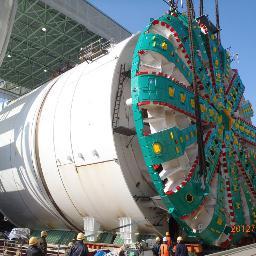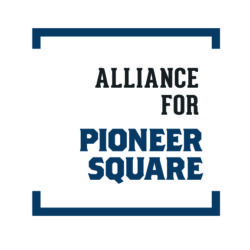 It’s been a busy start to 2014 with the opening of the South Atlantic Street overpass and crews working to get Bertha, the SR 99 tunneling machine, digging again. Here’s a recap of what we’ve been up to:
It’s been a busy start to 2014 with the opening of the South Atlantic Street overpass and crews working to get Bertha, the SR 99 tunneling machine, digging again. Here’s a recap of what we’ve been up to:
Milepost 31 Speaker Series: Learn about the South Atlantic Street overpass
On Monday, Jan. 27, we opened a new overpass to the west of Seattle’s stadiums, just south of Pioneer Square. The overpass allows traffic to bypass a busy railroad track that crosses South Atlantic Street. Before the overpass, train activity often blocked traffic for extended periods, which not only slowed truckers traveling to and from the Port of Seattle, but also created backups that stretched onto Seattle streets and Interstate 90. The overpass saves truckers as much as 20 minutes of travel time between the port and I-5 or I-90.
Visit Milepost 31 between 6 and 6:30 p.m. on Thursday, Feb. 6 to talk to staff about how the structure is changing traffic patterns in the area. Read more about the overpass here.
Further evaluation required before tunneling can resume
On Tuesday, Jan. 28, Seattle Tunnel Partners (STP) pushed the SR 99 tunneling machine – which had been stopped since Dec. 6 – forward approximately 2 feet. Moving the machine forward allowed crews to further test the functionality of the machine and determine if they could resume full-production mining. It also created sufficient space to build the next concrete tunnel liner ring on Wednesday, Jan. 29.
When the machine moved forward, crews saw indications of above-normal temperature readings in part of the machinery, similar to readings encountered before crews initially decided to stop mining on Dec. 6. On Wednesday, STP made adjustments and mined an additional 2 feet. The above-normal temperatures persisted, and STP made the decision to stop and perform further evaluations.
STP crews and tunnel engineers are operating the world’s largest tunneling machine in complex conditions. Although their investigations to date have provided a great deal of information, we will not be able to definitively identify the issue or issues facing the machine until tunneling experts complete their review. We will provide additional information as it becomes available.
Please visit our webpage for regular updates.
 You’ve been hearing a lot lately about WSDOT’s efforts to replace the State Route 99 Alaskan Way Viaduct (AWV). This is a big, complex undertaking. And as we all know, we’ve encountered some challenges. Join Matt Preedy, AWV Deputy Program Administrator, as he explains how WSDOT and STP are addressing these challenges and what the plan is to get Bertha, the SR 99 tunneling machine, moving again.
You’ve been hearing a lot lately about WSDOT’s efforts to replace the State Route 99 Alaskan Way Viaduct (AWV). This is a big, complex undertaking. And as we all know, we’ve encountered some challenges. Join Matt Preedy, AWV Deputy Program Administrator, as he explains how WSDOT and STP are addressing these challenges and what the plan is to get Bertha, the SR 99 tunneling machine, moving again.

